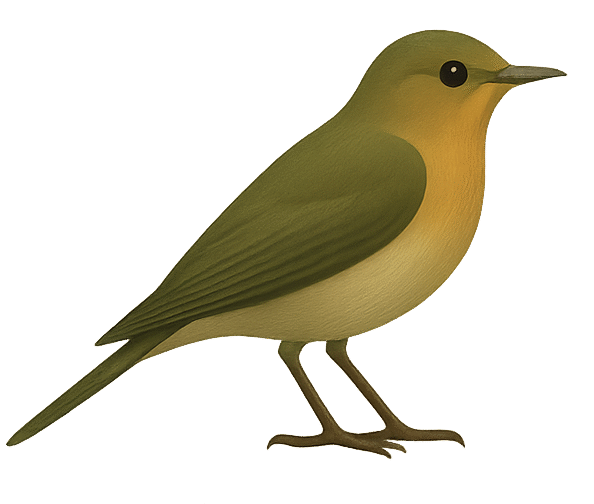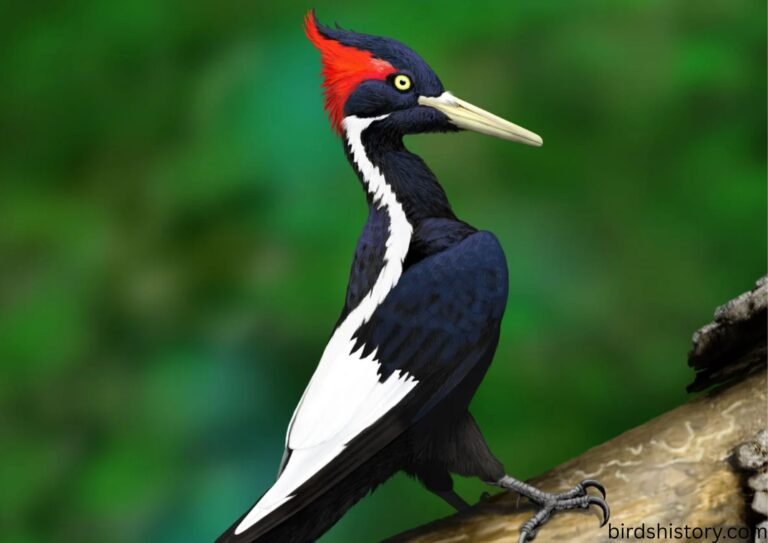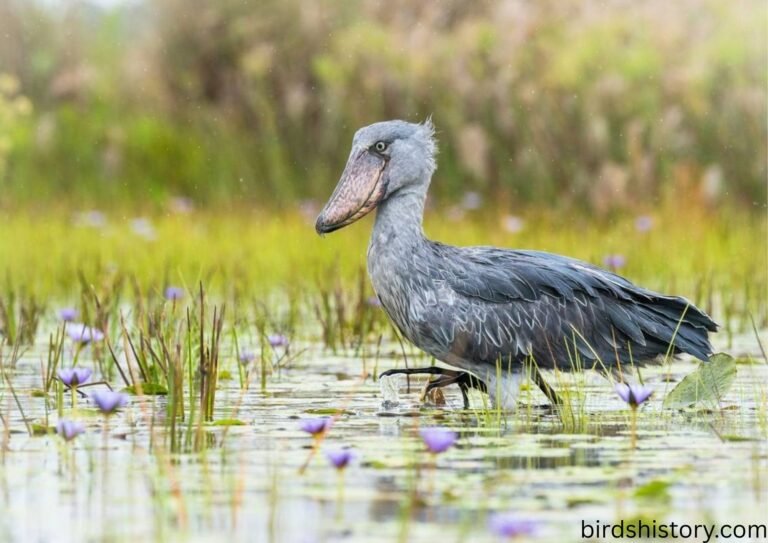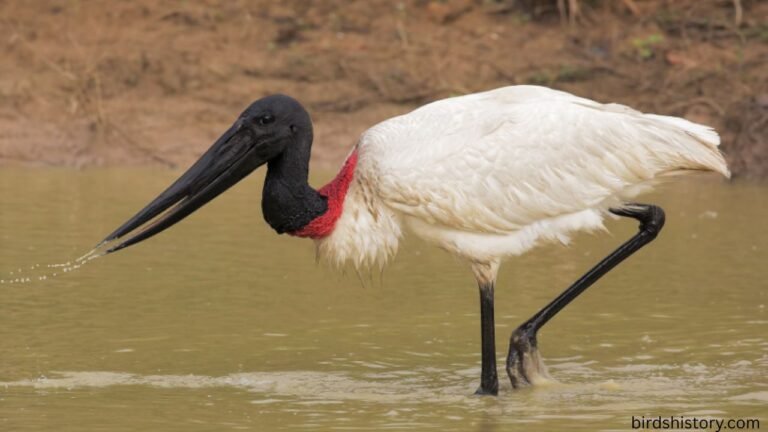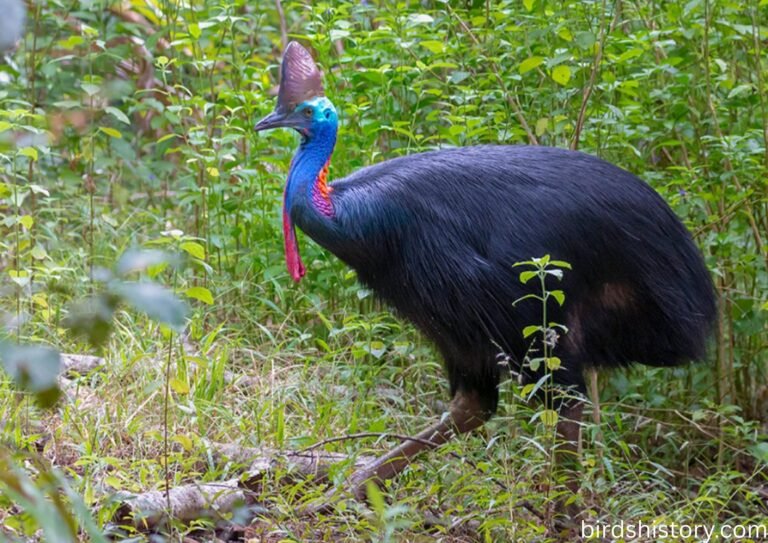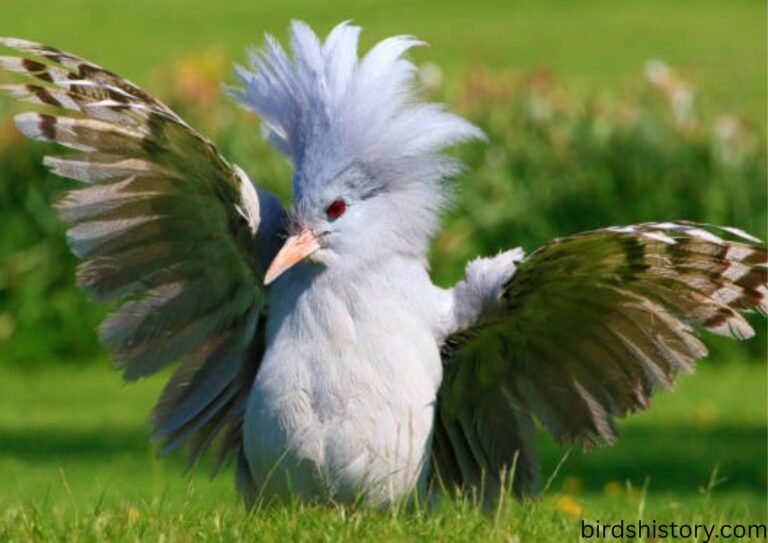Helmeted Hornbill: The Rare Guardian of Asian Forests
The Helmeted Hornbill looks so fantastical, it’s as if it flew right out of a mythical tale. With its oversized bill, dramatic casque (helmet-like structure on top of its beak), and haunting calls that echo through tropical forests, this bird is unlike any other.
Native to Southeast Asia, the Helmeted Hornbill (Rhinoplax vigil) is not just interesting for its unique appearance—it also plays a vital role in keeping rainforests healthy. But sadly, this bird is also one of the most endangered in its family, hunted for its casque, which is carved like ivory.
One surprising fact about the Helmeted Hornbill is that its casque is solid bone, unlike other hornbills, whose casques are mostly hollow. This makes it both an evolutionary marvel and a reason for its decline, since people illegally trade this “red ivory.”
In this article, we’ll dive deep into the world of the Helmeted Hornbill—its classification, traits, behavior, threats, and why protecting it is so important.
Taxonomy / Classification
Let’s first see where this unusual bird fits in the animal kingdom:
Also read: /the-wilsons-bird-of-paradise/
- Common Name: Helmeted Hornbill
- Scientific Name: Rhinoplax vigil
- Family: Bucerotidae (Hornbills)
- Order: Bucerotiformes
- Class: Aves
This bird belongs to the hornbill family, which includes more than 60 species found in Africa and Asia. Among them, the Helmeted Hornbill is the most unique because of its solid casque and highly symbolic cultural role in Asian traditions.
Physical Description
The Helmeted Hornbill is a striking bird with features that immediately capture attention.
- Size:
One of the largest hornbills, measuring about 120 cm (47 inches) in length, with a long central tail feather that can extend up to 50 cm. - Weight:
Between 3–3.5 kg (6.5–7.7 lbs). - Coloration:
- Head and throat are bare, with reddish skin (bright red in males, pale blue in females).
- Body feathers are mostly black, with white belly and tail feathers.
- Tail ends have black tips.
- Bill and Casque:
- The casque (helmet) is solid keratin and accounts for about 10% of the bird’s body weight.
- Casque color: reddish to yellowish.
- The beak itself is ivory-colored.
- Male vs Female Differences:
- Males have red bare skin on the neck.
- Females have pale blue or whitish skin.
- Both have equally long tails, but males are slightly larger overall.
- Unique Traits:
- The solid casque is used in head-to-head aerial battles, where males clash mid-flight to defend territories.
- Its loud, booming calls can be heard over a kilometer away, earning it the nickname “forest trumpeter.”
Habitat and Range
The Helmeted Hornbill is a bird of dense, old-growth forests.
- Geographic Range:
Found across Southeast Asia, particularly in:- Thailand
- Myanmar
- Malaysia
- Brunei
- Sumatra
- Borneo
- Preferred Environment:
- Primary lowland rainforests with tall, mature trees.
- Avoids heavily disturbed or secondary forests.
- It relies on large trees for both nesting spots and a steady supply of fruit.
- Altitude:
Mostly below 1,200 meters but sometimes found up to 1,500 meters. - Migration:
Largely sedentary, though it may move seasonally in search of fruiting trees.
Because of its dependence on old forests, deforestation has had a devastating impact on its populations.

Diet and Feeding Habits
The Helmeted Hornbill is mostly a frugivore (fruit eater), but its feeding habits are diverse.
- Primary Diet:
- Figs are the most important food source.
- Other tropical fruits depending on availability.
- Secondary Diet:
- Small animals, including insects, reptiles, and even small mammals, when fruit is scarce.
- Feeding Behavior:
- Forages high in the canopy.
- Swallows fruits whole, later regurgitating seeds, which helps in seed dispersal across the forest.
- Plays a crucial ecological role in maintaining tropical forest diversity.
This seed-dispersing behavior is so important that the Helmeted Hornbill is sometimes called a “gardener of the forest.”
Behavior and Lifestyle
Social Structure
- Generally solitary or found in pairs.
- Sometimes seen in small groups at fruiting trees.
Flight
- Strong flier with heavy wingbeats.
- Known for long glides after bursts of wing flapping.
Vocalizations
- Famous for its loud, laughing call followed by deep booming notes that echo through the forest.
- Calls can travel more than 1.5 km, making it one of the loudest birds in Asia.
Territorial Battles
- Males engage in spectacular mid-air battles, crashing their casques together with loud clacks.
- These fights can be so intense that casque fragments have been found on the forest floor.
Courtship
- Males often present food to females as part of pair bonding.
- The casque and booming calls are thought to play a role in attracting mates.
Reproduction and Lifespan
Breeding Season
- Usually during the dry season when food is plentiful.
Nesting
- Helmeted Hornbills follow the classic hornbill nesting ritual:
- The female seals herself inside a tree hollow using mud and droppings, leaving just a small slit.
- The male brings food and delivers it to her through that small opening.
Eggs
- Typically 1–2 eggs per season.
- Incubation lasts about 40 days.
- Female remains sealed inside until the chicks are large enough to be safe.
Lifespan
- Wild: Estimated 30 years.
- Captivity: Rarely kept, but lifespan may extend slightly.
This unique nesting strategy protects the female and chicks from predators but makes the species dependent on large, old trees—a major conservation challenge today.

Predators and Threats
Natural Predators
- Eagles and large forest raptors may prey on chicks.
- Snakes and monitor lizards raid nests.
Human-Induced Threats
- Poaching:
- The casque is carved into jewelry and ornaments, often called “red ivory.”
- Demand comes mostly from illegal markets in China and Southeast Asia.
- Deforestation:
- Logging removes the massive trees needed for nesting.
- Natural habitats in Malaysia and Indonesia are being converted into palm oil plantations.
These dangers caused by humans are much more significant than natural predators and are the primary reason the Helmeted Hornbill is critically endangered.
Conservation Status
- IUCN Red List Status: Critically Endangered
- Population Estimate: Fewer than 20,000 individuals left, with steep declines in recent decades.
Key Conservation Efforts
- Law Enforcement:
- The species is protected under CITES Appendix I, banning international trade.
- Protected Areas:
- National parks in Malaysia, Indonesia, and Thailand safeguard some remaining populations.
- Awareness Campaigns:
- Conservation groups highlight the plight of the Helmeted Hornbill, calling for stronger anti-poaching measures.
However, because of lax enforcement, illegal trade continues to be a significant issue.
Interesting Facts
Here are some surprising and engaging facts about the Helmeted Hornbill:
- Its casque can weigh up to 10% of its body weight.
- Unlike other hornbills, its casque is solid bone.
- It is sometimes called the “king of hornbills” due to its size and unique casque.
- The calls of Helmeted Hornbills can last over a minute and echo across the forest.
- In some cultures, the casque is considered more valuable than elephant ivory.
- The people of Borneo consider the bird to be a spiritual protector of the forest.
- Casque-to-casque battles are unique to this species.
- It disperses seeds of fig trees, which are keystone species in rainforests.
- The Helmeted Hornbill is often used as a flagship species for forest conservation.
- Ancient carvings made from its casque date back hundreds of years in Asia.
Conclusion
The Helmeted Hornbill is one of the most extraordinary birds in the world. Its massive size, solid casque, booming calls, and ecological importance make it a true guardian of Southeast Asian forests.
Yet, it also faces a tragic reality: poaching and deforestation are pushing it toward extinction. Protecting this bird is about more than saving a single species—it’s about preserving entire rainforest ecosystems.
By supporting conservation initiatives, spreading awareness, and reducing demand for wildlife products, we can give the Helmeted Hornbill a fighting chance to thrive for generations to come.

FAQs
1. What is the Helmeted Hornbill’s scientific name?
Rhinoplax vigil.
2. Why is it called the Helmeted Hornbill?
Due to the unique, helmet-like solid casque located on top of its beak.
3. Where can it be found?
In Southeast Asia, including Thailand, Malaysia, Sumatra, and Borneo.
4. What does it eat?
Mostly figs and other fruits, but also insects and small animals.
5. How does it help the forest?
By dispersing seeds, it supports forest regeneration.
6. Why is it endangered?
It faces threats from poaching for its casque and the loss of its habitat due to logging.
7. What is “red ivory”?
The carved casque of the Helmeted Hornbill, sold illegally.
8. How does it nest?
The female seals herself inside a tree cavity, relying on the male for food.
9. How long can it live?
Around 30 years in the wild.
10. Can Helmeted Hornbills be kept in captivity?
Rarely, as they depend heavily on large forests and nesting trees.
